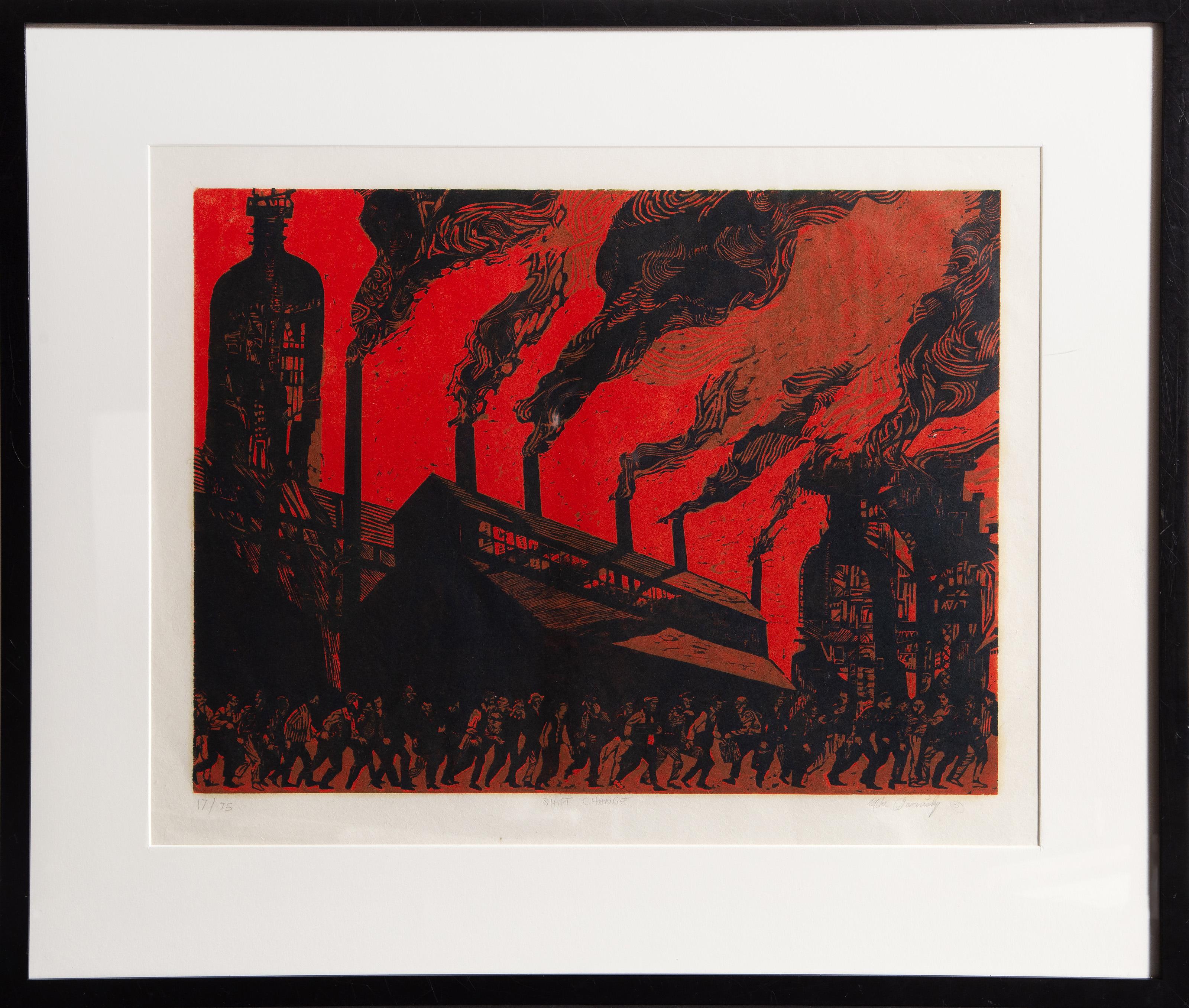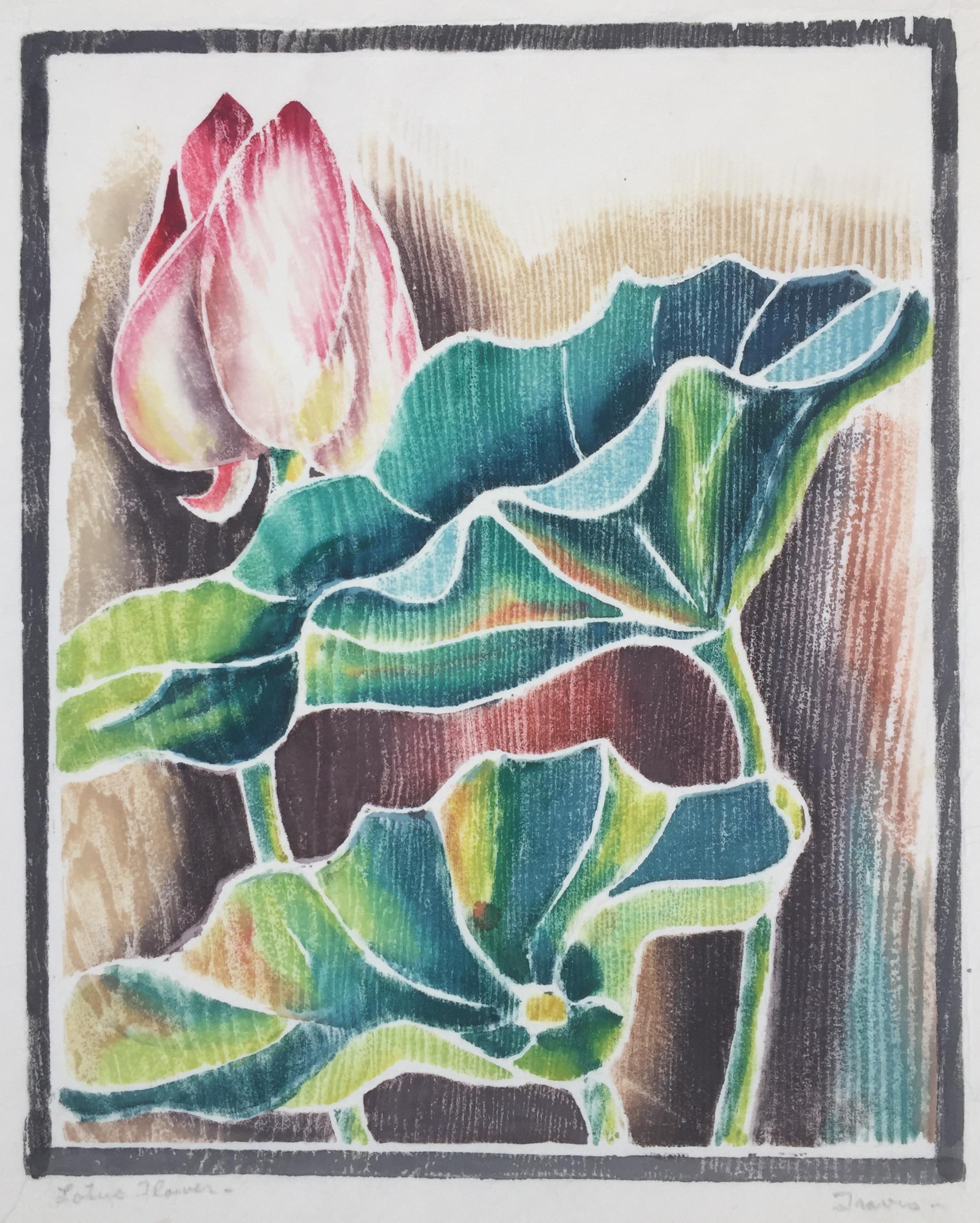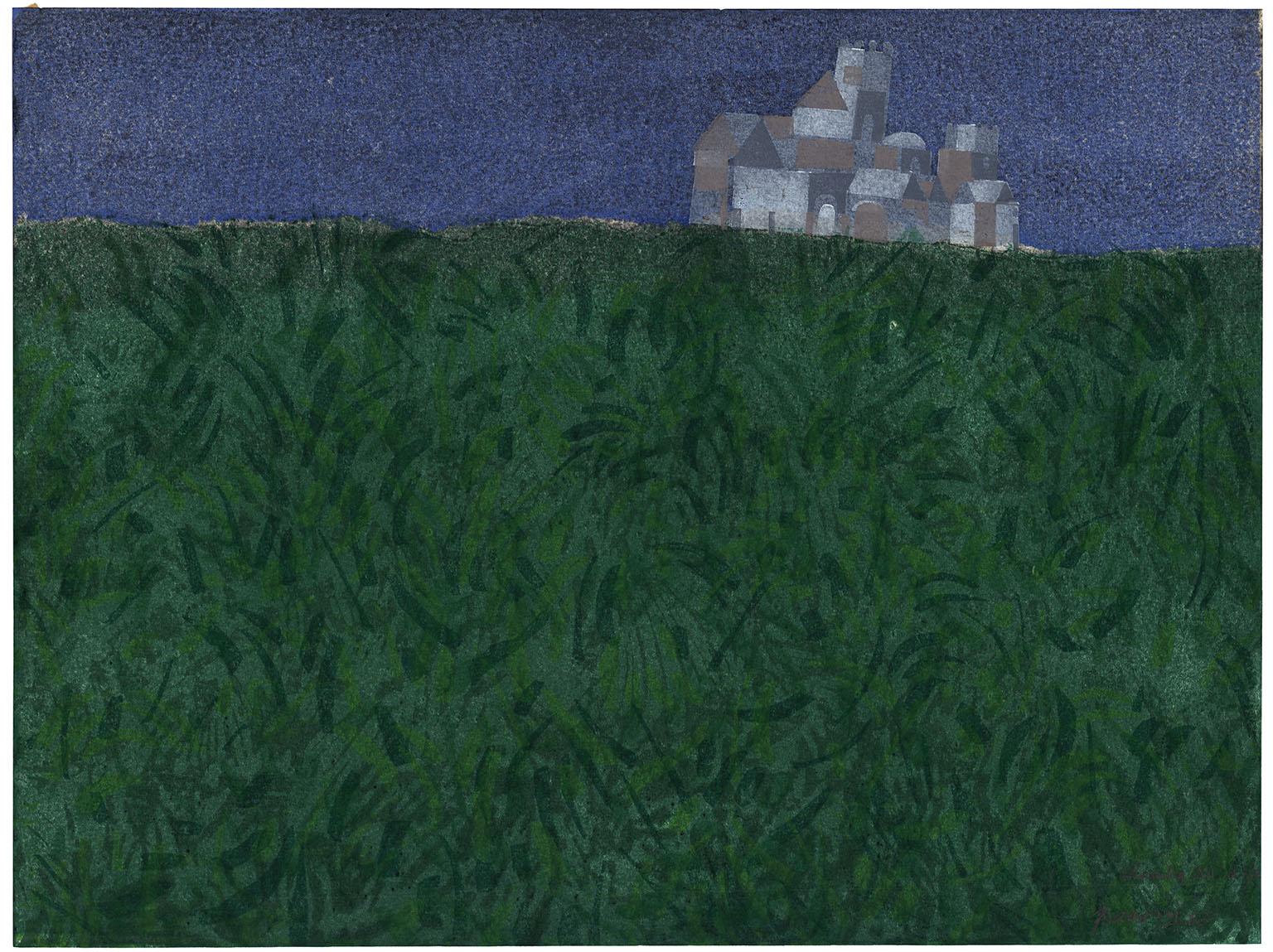Items Similar to THE HARBOR WORKHORSE
Want more images or videos?
Request additional images or videos from the seller
1 of 6
Woldemar NeufeldTHE HARBOR WORKHORSE
About the Item
Neufeld, Woldemar. THE HARBOR WORKHORSE. Woodcut in colors, not dated (c.1940s-50s). Edition size not known, but likely 50 or fewer. 17 1/2 x 12 inches, plus margins of 1 inch or more. A striking composition with strong colors. In excellent condition except for small paper losses at the edges of the top margin, well away from the image. Framed
- Creator:Woldemar Neufeld (1909 - 2002, Canadian)
- Dimensions:Height: 24 in (60.96 cm)Width: 18 in (45.72 cm)Depth: 3 in (7.62 cm)
- Medium:
- Movement & Style:
- Period:
- Condition:
- Gallery Location:Portland, ME
- Reference Number:
About the Seller
5.0
Recognized Seller
These prestigious sellers are industry leaders and represent the highest echelon for item quality and design.
Platinum Seller
These expertly vetted sellers are 1stDibs' most experienced sellers and are rated highest by our customers.
Established in 1966
1stDibs seller since 2016
301 sales on 1stDibs
Typical response time: 2 hours
Associations
International Fine Print Dealers Association
- ShippingRetrieving quote...Ships From: Portland, ME
- Return PolicyA return for this item may be initiated within 10 days of delivery.
More From This SellerView All
- QUEENSBRIDGELocated in Portland, MEBernhardt, John (American 1921-1963. QUEENSBRIDGE. Color Woodcut, 1965. Ttiled, signed, dated and annotated "To Smitty" in pencil. 17 3/4 x 28 inches. In very good condition. Framed ...Category
Mid-20th Century American Modern Landscape Prints
MaterialsColor, Woodcut
- ARCH NO. 1By Stuart DavisLocated in Portland, MEDavis, Stuart. ARCH NO. 1. Lithograph, 1929. Edition of 30. Numbered "23/30" and signed in pencil. 8 3/4 x 13 inches, 225 x 275 mm. In excellent condition.Category
American Modern Landscape Prints
MaterialsLithograph
- BREAKING CAMPBy Clare LeightonLocated in Portland, MELeighton, Clare. BREAKING CAMP. BPL 192. Wood engraving, 1931. SIgned, titled and numbered 61/100, all in pencil. From the 1st edition of the Lumber Camp series, which comprised 30 f...Category
1930s Landscape Prints
MaterialsWoodcut
- ALHAMBRA XIIBy Antonio FrasconiLocated in Portland, MEFrasconi, Antonio. ALHAMBRA XII. Color woodcut, 1963. Edition of 15. Signed, titled and inscribed "ed 15" in pencil. 10 1/2 X 14 1/8 nches (image). In excellent condition. Frasconi ...Category
1960s Landscape Prints
MaterialsWoodcut
- TEAHOUSE AND WILLOW TREEBy Junichiro SekinoLocated in Portland, MEJunichiro Sekino (Japanese, 1914-1988). TEAHOUSE AND WILLOW TREE. Color woodblock print, not dated. Edition size not known. Signed in pencil and with the a...Category
Mid-20th Century Landscape Prints
MaterialsWoodcut
- KATSURA KYOTO IBy Kiyoshi SaitōLocated in Portland, MESaito, Kiyoshi. KATSURA KYOTO I. Color Woodblock, 1962. Edition of 200. Titled, dated and numbered 84/200 in pencil. Signed in the block (prints from thi...Category
1960s Landscape Prints
MaterialsWoodcut, Adhesive
You May Also Like
- Shift Change, Social Realist Woodblock Print by Mike GoscinskyLocated in Long Island City, NYShift Change Mike Goscinsky, American (1933–2021) Woodblock on thin wove paper, signed, titled and numbered in pencil Edition of 15/75 Image Size: 14 x 19 inches Size: 22 x 26.5 in. ...Category
1990s American Modern Landscape Prints
MaterialsWoodcut
- 'Taos Placita' — 1940s Southwest RegionalismBy Gustave BaumannLocated in Myrtle Beach, SCGustave Baumann, 'Taos Placita', color woodcut, 1947, edition 125. Baumann 132. Signed, titled, and numbered '20-125' in pencil; with the artist’s Hand-in-Heart chop. A superb, richly-inked impression, with fresh colors, on fibrous oatmeal wove paper; the full sheet with margins (2 to 3 1/8 inches); slight rippling at the left sheet edge, in excellent condition. Matted to museum standards, unframed. Image size 9 5/8 x 11 1/4 inches (244 x 286 mm); sheet size 13 1/4 x 17 inches (337 x 432 mm). Collections: New Mexico Museum of Art, Phoenix Art Museum, Wichita Art Museum. ABOUT THE ARTIST Gustave Baumann (1881-1971) was a renowned printmaker and a leading figure of the American color woodcut revival whose exquisite craftsmanship and vibrant imagery captured the essence of the Southwest. "A brilliant printmaker, Baumann brought to the medium a full mastery of the craft of woodworking that he acquired from his father, a German cabinetmaker. This craftsmanship was coupled with a strong artistic training that resulted in the handsome objects we see in the exhibition today. After discovering New Mexico in 1918, Baumann began to explore in his woodblock prints of this period the light. color, and architectural forms of that landscape. His prints of this period are among the most beautiful and poetic images of the American West." —Lewis I. Sharp, Director, Denver Art Museum Baumann, the son of a craftsman, immigrated to the United States from Germany with his family when he was ten, settling in Chicago. From 1897 to 1904, he studied in the evenings at the Art Institute of Chicago, working in a commercial printmaking shop during the day. In 1905, he returned to Germany to attend the Kunstwerbe Schule in Munich, where he decided on a career in printmaking. He returned to Chicago in 1906 and worked for a few years as a graphic designer of labels. Baumann made his first prints in 1909 and exhibited them at the Art Institute of Chicago the following year. In 1910, he moved to the artists’ colony in Nashville, Indiana, where he explored the creative and commercial possibilities of a career as a printmaker. In 1915, he exhibited his color woodcuts at the Panama-Pacific International Exposition in San Francisco, winning the gold medal. Among Baumann’s ongoing commercial activities was his work for the Packard Motor Car Company from 1914 to 1920 where he produced designs, illustrations, and color woodcuts until 1923. In 1919, Baumann’s printmaking work dominated the important exhibition of American color woodcuts at the Detroit Institute of Arts. Twenty-six of his prints were included, far more than the works of any other artist. A set of his blocks, a preparatory drawing, and seven progressive proofs complemented the exhibition. That same year, Baumann worked in New York and, over the summer, in Provincetown, Massachusetts. His airy images of Cape Cod employed soft, pastel colors and occasionally showed the influence of the white-line woodcut technique. Many of his Chicago artist friends had traveled to the southwest, and Baumann became intrigued by their paintings, souvenirs, and stories of an exotic place named Taos, New Mexico. In the summer of 1918, he spent the summer in Taos sketching and painting before visiting Santa Fe. Paul Walter, the director of the Museum of New Mexico, offered him a studio in the museum's basement. Inspired by the rugged beauty of the Southwest—the vibrant colors and dramatic landscapes of the region became a central theme in his work, influencing his artistic style and subject matter for the remainder of his career. Later in the decade, he traveled to the West Coast and made prints of California landscape. Baumann's prints became synonymous with the Southwest, capturing the spirit of its place in America's identity with a unique sense of authenticity and reverence. His iconic images of desert vistas, pueblo villages, and indigenous cultures served as visual tributes to the region's rich cultural heritage, earning him a dedicated following among collectors and curators alike. A true craftsman and artist, Baumann completed every step of the printmaking process himself, cutting each block, mixing the inks, and printing every impression on the handmade paper he selected. His dedication to true craftsmanship and his commitment to preserving the integrity of his artistic vision earned him widespread acclaim and recognition within the art world. About the vibrant colors he produced, Baumann stated, “A knowledge of color needs to be acquired since they don’t all behave the same way when ground or mixed...careful chemistry goes into the making of colors, with meticulous testing for permanence. While complicated formulae evolve new colors, those derived from Earth and metal bases are still the most reliable.” In the 1930s, Baumann became interested in puppet theater. He designed and carved his own marionettes and established a little traveling company. From 1943 to 1945, the artist carved an altarpiece for the Episcopal Church of the Holy Faith in Santa Fe. In 1952, a retrospective exhibition of his prints was mounted at the New Mexico Museum of Fine Arts. Throughout his prolific career, Baumann executed nearly four hundred color woodcuts. Baumann’s woodcuts...Category
1940s American Modern Landscape Prints
MaterialsWoodcut
- LOTUS FLOWER - ROEDING PARK - Provincetown StyleBy Mary TravisLocated in Santa Monica, CAMARY TRAVIS (Active 1935 - 40) LOTUS FLOWER ROEDING PARK. c.1935-40 White line color woodcut. Signed and titled in pencil. Small edition. 10” x 8”. Full sheet. tears in upper margin. Travis worked in Berkeley, California and was probably a follower of William S...Category
1930s American Modern Landscape Prints
MaterialsWoodcut
- LOTUS FLOWER - Provincetown StyleBy Mary TravisLocated in Santa Monica, CAMARY TRAVIS (1893-1976)) LOTUS FLOWER c. 1935-40 White line color woodcut. Signed and titled in pencil. Small edition. 9 ¾” x 7 7/8”. Full sheet. Some creasing in the margins. Travis worked in Berkeley, California and was probably a follower of William S...Category
1940s American Modern Landscape Prints
MaterialsWoodcut
- "The Long White Road, " Landscape Wood EngravingBy Lowell Merritt LeeLocated in Milwaukee, WI"The Long White Road" is an original wood engraving by Lowell Merritt Lee. A long white road stretches past empty barren trees under a cloudy sky. Image: 6" x 5" Framed: 15.37" x 1...Category
1930s American Modern Landscape Prints
MaterialsWoodcut
- Alhambra XIIBy Antonio FrasconiLocated in New York, NYAntonio Frasconi created the color woodcut entitled “Alhambra XII” in 1963. This piece is signed titled, and dated in pencil. The edition is 12, and paper size is 18 x 24 inches. “...Category
1960s American Modern Landscape Prints
MaterialsWoodcut
Recently Viewed
View AllMore Ways To Browse
Mid Day At East Hampton Beach
Montaut Lithograph
Peter De Pannemaeker
Piranesi Lifetime
Rossini Engraving
Simon Tozer
Trevor James
Vintage Northwest Airlines Posters
Vintage Piranesi
Witch Hazel
Wu Guanzhong
Zanzibar Art
Arthur Dodge Paintings
Banksy Palestine
Bavarian Clock
Blue Lady Planet
Branko Paradis
Frans Hogenberg On Sale





